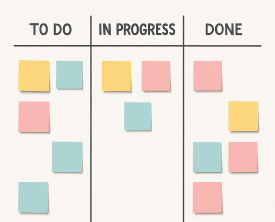The benefits of a work-from-home program
By Mark Ballance, Resource Scheduling Specialist at Schedule it Ltd since 2010.
 Such programs need a layer of scheduling and planning, but the results show they are worth the extra effort.
Such programs need a layer of scheduling and planning, but the results show they are worth the extra effort.The latest statistics from Global Workplace Analytics say growth of "multiple days per week of employee telecommuting increased 79.7% from 2005 to 2012." And as these work-from-home policies have increased, so has the call to study their effects on productivity. This article dives in to one of the most interesting recent studies of a work-from-home policy and discusses the implications for today's manager.
Update 2025: This blog was written over 10 years ago and 5 years before Covid. It's amazing to read it again knowing what we know now!
The Test
Earlier this year, Harvard Business Review (HBR) published the results of an experiment they performed with china's largest travel agent, Ctrip. Their goal was to find out what would happen to productivity if the employees were allowed to work from home.
In the nine-month test, Ctrip asked for volunteers to work from home. They received 255. Half the volunteers were randomly selected to work from home for four days a week. The others stayed in the office as a control group. Both sets worked the same hours, used the same computer systems, and kept the same management as they had previously. The company tracked performance by measuring the sales each group member made and the quality of their customer interactions.
In the nine-month test, Ctrip asked for volunteers to work from home. They received 255. Half the volunteers were randomly selected to work from home for four days a week. The others stayed in the office as a control group. Both sets worked the same hours, used the same computer systems, and kept the same management as they had previously. The company tracked performance by measuring the sales each group member made and the quality of their customer interactions.
The Findings
The home-workers' performance increased significantly while the control group's performance stayed steady. The home-workers took less breaks and did not take as many sick days. They also found their homes to be a quieter work environment, which made them more productive per minute. Most importantly, the staff turnover for the home-workers was 50% lower than it was for the control group.
Takeaways for Managers
According to Gretchen Rubin, author of The Happiness Project: "Happiness is affected by an [employee's] sense of control over their lives." Work-from-home and telecommuting programs show a company's appreciation of work-life balance and can therefore help retain staff and improve job satisfaction.
HBR agreed. It said working from home could be a positive experience for both a company and its employees. It encouraged firms - even those that thrive on innovation and believe that interaction among employees promotes productivity - to be open to employees working from home some of the time, at the very least.
HBR agreed. It said working from home could be a positive experience for both a company and its employees. It encouraged firms - even those that thrive on innovation and believe that interaction among employees promotes productivity - to be open to employees working from home some of the time, at the very least.
Scheduling and Planning
These programs add a layer of scheduling and planning. The work-from-home policy needs clear guidelines. Managers and employees need to schedule their days in advance so no surprises arise. And most of all, productivity needs to be tracked to ensure that everyone is benefiting from the policy without detriment to the company.
Scheduling software can help navigate these issues. It can organise jobs and tasks no matter the employee's location. It can also track completed jobs, training records, and workloads, so managers can be confident that productivity hasn't dropped as a result of the new working arrangements.
Scheduling software can help navigate these issues. It can organise jobs and tasks no matter the employee's location. It can also track completed jobs, training records, and workloads, so managers can be confident that productivity hasn't dropped as a result of the new working arrangements.
Try Schedule it Free
No credit card required. Capterra/G2











